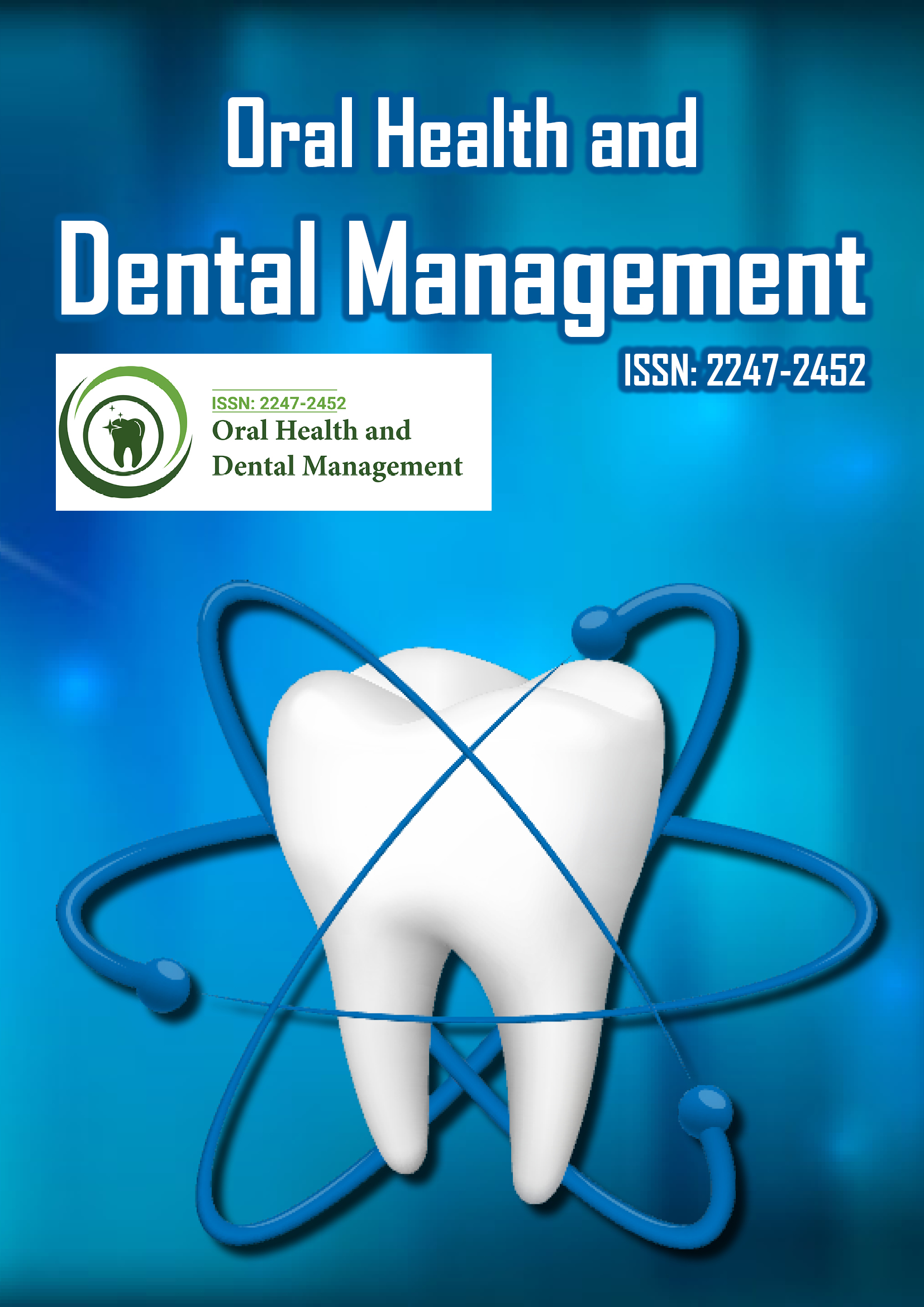Indexed In
- The Global Impact Factor (GIF)
- CiteFactor
- Electronic Journals Library
- RefSeek
- Hamdard University
- EBSCO A-Z
- Virtual Library of Biology (vifabio)
- International committee of medical journals editors (ICMJE)
- Google Scholar
Useful Links
Share This Page
Journal Flyer

Open Access Journals
- Agri and Aquaculture
- Biochemistry
- Bioinformatics & Systems Biology
- Business & Management
- Chemistry
- Clinical Sciences
- Engineering
- Food & Nutrition
- General Science
- Genetics & Molecular Biology
- Immunology & Microbiology
- Medical Sciences
- Neuroscience & Psychology
- Nursing & Health Care
- Pharmaceutical Sciences
Commentary - (2024) Volume 23, Issue 4
The Role of Endodontics and Dental Traumatology in Managing Dental Health Challenges
Sophie Richards*Received: 29-Nov-2024, Manuscript No. OHDM-24-28397; Editor assigned: 02-Dec-2024, Pre QC No. OHDM-24-28397 (PQ); Reviewed: 16-Dec-2024, QC No. OHDM-24-28397; Revised: 23-Dec-2024, Manuscript No. OHDM-24-28397 (R); Published: 30-Dec-2024, DOI: 10.35248/2247-2452.24.23.1126
Description
Endodontics and dental traumatology are two integral branches of dentistry that are focused on addressing critical aspects of dental health related to the pulp and surrounding tissues. While endodontics primarily involves the diagnosis, prevention and treatment of conditions affecting the dental pulp, dental traumatology is concerned with the management of dental injuries, particularly those resulting from accidents or trauma. The intersection of these two fields is essential in ensuring that teeth and their supporting structures are effectively preserved, leading to optimal oral health outcomes. Both areas have evolved significantly with advances in diagnostic tools, materials and treatment techniques and their combined focus on both the biological and functional restoration of teeth has made remarkable strides in recent years.
In endodontics, the core goal is to preserve the natural tooth structure while addressing any infection or damage within the pulp, which houses the nerves and blood vessels of the tooth. Root canal treatment, one of the most common procedures in endodontics, involves cleaning out the infected or damaged pulp, sealing the chamber and restoring the tooth to its functional state. However, this field has progressed far beyond simple root canal procedures. Modern techniques, such as the use of advanced irrigation protocols, rotary instruments and biocompatible materials, have greatly enhanced the efficiency and effectiveness of treatments. Moreover, the advent of digital imaging technologies, such as Cone-Beam Computed Tomography (CBCT), has significantly improved diagnostic capabilities, allowing for more precise treatment planning and better visualization of complex cases.
Endodontic procedures, while designed to save the natural tooth, often require careful management of post-treatment complications. One major concern is the potential for reinfection, which can occur if bacteria remain in the root canal system after treatment. This issue is further complicated in cases involving severely damaged or fractured teeth, where achieving a complete seal of the pulp chamber may be challenging. As a result, ongoing research in materials science continues to focus on the development of better sealing agents and antimicrobial solutions that can improve the long-term success of root canal treatments. Additionally, regenerative endodontics has emerged as an exciting field, which aims to stimulate the regeneration of the pulp tissue and its supporting structures, potentially providing an alternative to traditional root canal therapy.
On the other hand, dental traumatology deals with a range of conditions caused by external forces, such as fractures, luxations, or avulsions of teeth. Prompt and appropriate management of dental trauma is essential to prevent long-term complications, such as tooth loss, infection, or improper development of permanent teeth in pediatric cases. Traumatic injuries to the teeth can occur in various settings, including sports, car accidents, falls, or even due to orthodontic treatment. The management of dental trauma can be complex, requiring immediate care to minimize damage and long-term interventions to restore function.
In the field of dental traumatology, the key is early intervention. Immediate actions taken at the time of trauma, such as replanting a knocked-out tooth or splinting a loose tooth, can greatly impact the success of the treatment. The use of a tooth replantation protocol is essential when handling avulsed teeth, as the chances of successful reintegration are highest if the tooth is reimplanted within a short time frame. For luxated teeth, the primary goal is to reposition the tooth to its original alignment and secure it with splints, allowing for proper healing. The role of pulp vitality testing and regular follow-up visits is essential in monitoring the tooth’s healing process and detecting any complications, such as infection or necrosis, which may necessitate endodontic treatment.
In conclusion, the fields of endodontics and dental traumatology play critical roles in maintaining and restoring the health of the teeth and surrounding tissues. Advances in diagnostic tools, treatment techniques and materials continue to improve the outcomes of both endodontic procedures and trauma management. While challenges remain, particularly with regard to predicting long-term outcomes and addressing complications, ongoing research holds promise for better treatments that preserve natural tooth structures and improve overall patient care. Through continued innovation and collaboration across disciplines, both fields are likely to evolve and provide even more effective solutions for managing the complexities of dental health.
